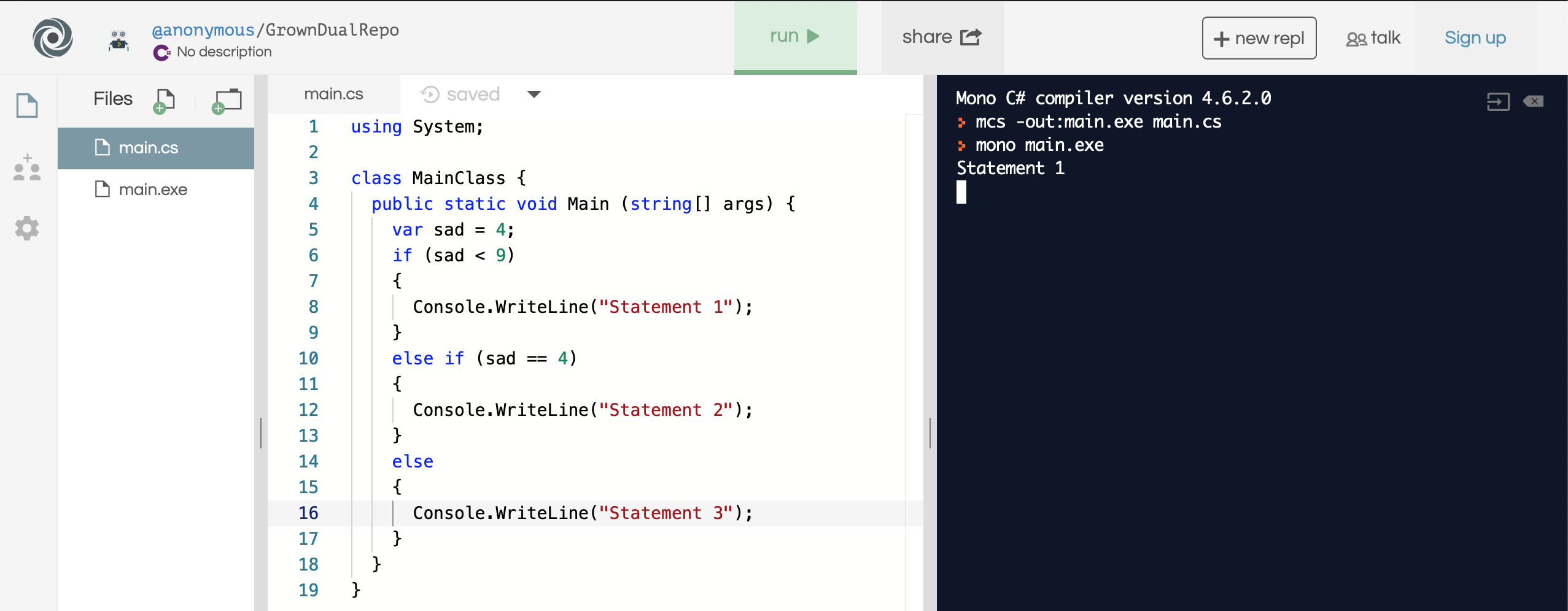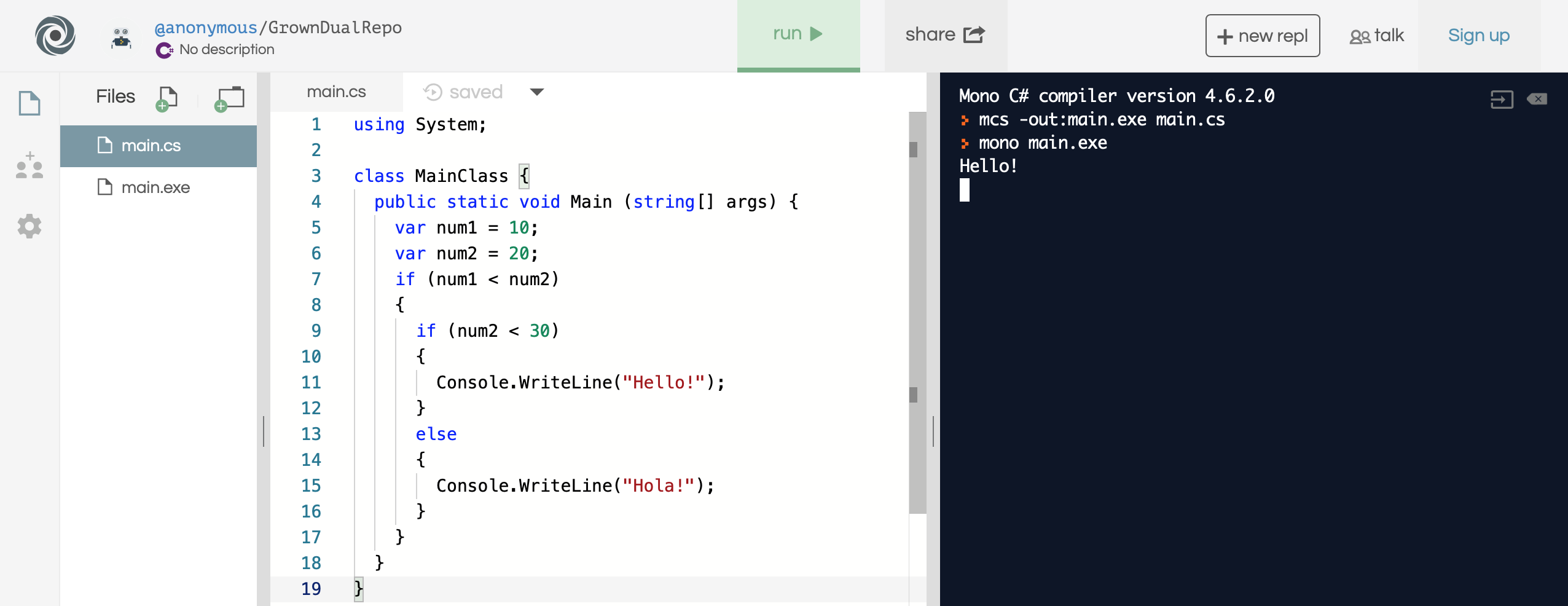If-else statements
If-else statements
You can use if statements to run code statement only if certain conditions are met. Here is an example:
var myNum = (93 + 41) / 12;
if (myNum == 11)
{
Console.WriteLine("They are equal!");
}
Inside the () beside if, you should specify a boolean expression. If the expression is true, the code inside { } is executed. In this case, since myNum is equal to 11, They are equal! is printed.

If the condition is false, nothing happens! For example, since 10 is not greater than 11, Print me! will not show up to the console.
var happy = 10;
if (happy > 11)
{
Console.WriteLine("Print me!");
}

Use else to tell the computer what to do if the condition is false. In this example, now I got printed instead! will be printed to the console.
var happy = 10;
if (happy > 11)
{
Console.WriteLine("Print me!");
}
else
{
Console.WriteLine("I got printed instead!");
}

You can chain many cases together using else if. Note that when using else if, only the first case will be evaluated. For example, in the following code snippet, Statement 1 will be printed. We will skip the check that sad == 4 and Statement 2 will not be printed, even though sad == 4 is true.
var sad = 4;
if (sad < 9)
{
Console.WriteLine("Statement 1");
}
else if (sad == 4)
{
Console.WriteLine("Statement 2");
}
else
{
Console.WriteLine("Statement 3");
}

You can also place if statements inside other if statements for some interesting behavior:
var num1 = 10;
var num2 = 20;
if (num1 < num2)
{
if (num2 < 30)
{
Console.WriteLine("Hello!");
}
else
{
Console.WriteLine("Hola!");
}
}

Working Together
Let’s write a program that first prints the following line to console:
Is coding fun?
Afterwards, the console waits for user input.
- If the user enters yes, the computer prints out
Yes, I'm glad you're enjoying it!. - If the user enters no, the computer prints out
Oh no, that's too bad!. - Otherwise, the computer prints out:
I don't understand you! Goodbye!.
Fun Fact: Switch statements
Using multiple if, else statements could get very long and confusing. You can use switch statements instead if you want to compare a single variable against multiple values. For example, the Working Together activity can be completed using the following piece of code:
var input = Console.ReadLine();
switch (input)
{
case "yes":
Console.WriteLine("Yes, I'm glad you're enjoying it!");
break;
case "no":
Console.WriteLine("Oh no, that's too bad!");
break;
default:
Console.WriteLine("I don't understand you! Goodbye!");
break;
}
Each case represents a possible value that the variable input might take. Make sure you use the break statement to tell the computer that you have completed all the actions associated with this case.
